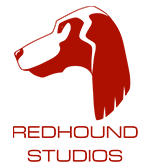CGI Versus Traditional Photography for Product Images



CGI Versus Traditional Photography for Product Images

Traditional Photography
Boxed products come in a variety shapes and sizes and many companies have an extensive catalogue of products all of which require photography for marketing and advertising. Known as the “product shot” photography is the traditional and acceptable method of producing these images, but it can be slow, expensive and painstaking with no guarantee of consistency from image to image especially the arrangement of assets in the picture. It can also take up a shocking amount of time for internal staff who are often required to manage the process as the shoot takes place, usually off-site at a local studio. Logistics for a shoot like this are not to be underestimated and every product must be available for the shoot, clean and dust free with no fingerprints, creases or damage to any part of it. All assets must be ready in advance on a per shot basis in order of requirement where possible. In short, there’s a lot than go wrong and even if it goes to plan, it can be a long process.
The CGI Method
As we are dealing with digital information rather than physical, no care is needed to prepare assets. Using CGI, it is possible to produce consistent images with perfect lighting and placement of elements and has the very real benefit of economies of scale.
The lighting and camera position will remain constant and without getting too technical provided there are similarities between products and how they are composed time can be saved in composition and placement of products. The image below shows three distinctly different products but have a common box size, container design and capsule size.
Instead of creating a completely new asset and placing it in the scene we have simply changed the texture on the box and the label on the container and then rendered the image. This takes seconds to achieve with our software but more importantly, the models remain where they were ensuring the required consistency sought after in a catalogue. with this in mind, the larger the catalogue, the more cost effective CGI becomes.
For this particular project there were multiple box graphics for each product for sale in different territories throughout the World. Employing this method of switching out the texture (having been supplied with the print graphics) we were able to produce the whole catalogue of images for all territories quickly and drastically cheaper than photography.
Other Advantages of Using CGI
Some of the products had not hit the market yet and no physical packaging existed at the time to photograph meaning CGI was the only way to market a product not yet in production. Using the graphics to be supplied to the printers for labels and box artwork we were able to produce the product shots for launch ahead of the manufacturing processes while maintaining consistency with the rest of the catalogue.
Additions to an existing product line up can be created easily and consistently as the CGI data for previous work already exists including lighting, camera angles, exposure and so on.
Each image is named individually at the time it is created reducing the risk of incorrect naming.
The approval process is expedited as once a scene is set up and the first finished image approved, the rest of the images will be approved as there are no variables to consider like exposure, asset placement etc.
Members of staff within the client’s organisation will save time as they are not required to attend the shoot at a photography studio or waste time with the logistical side of the project beyond supplying a spreadsheet of the products and the graphics for print.
With any photograph or CGI rendering a certain amount of time is spent per image retouching in a package like Photoshop. Known as the “beauty pass”, post effect work is not only kept to a minimum but need only be done once using the system of upcycling as described earlier by changing the label graphics rather than working on every single image.
Images are ordinarily created far bigger than would be required for web and print and can be used for high quality poster size print for shows, displays and point of sale images. The image below shows the high quality achieved in a close-up of a section of a 4000 x 4000 image.
If you have an extensive product line-up and would like to know more, please contact us. Referencing this blog will entitle you to a discount should you place an order with us.
Acknowledgement goes to Wrenlabs for kindly allowing us to demonstrate using their products in this blog.